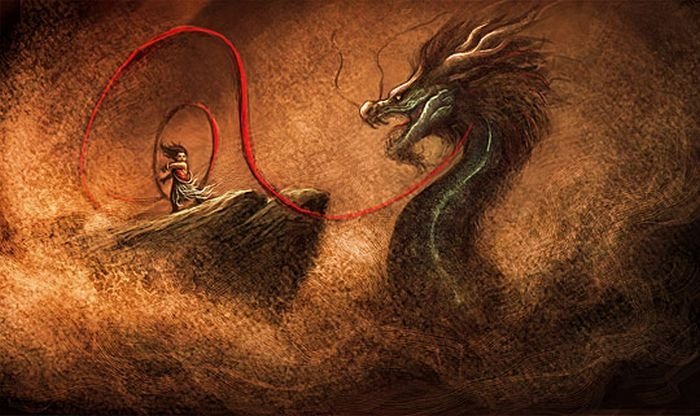|
|
Dragon Drawing
|
In the book An Instinct for Dragons anthropologist David E. Jones suggests a hypothesis that humans just like monkeys have inherited instinctive reactions to snakes, large cats and birds of prey. Dragons have features that are combinations of these three. Our instinctive fear for these three would explain why dragons with similar features occur in stories from independent cultures on all continents. Other authors have suggested that especially under the influence of drugs or in dreams, this instinct may give raise to fantasies about dragons, snakes, spiders, etc., which would explain why these symbols are popular in drug culture. The traditional mainstream explanation to the folklore dragons does however not rely on human instinct, but on the assumption that fossil remains of dinosaurs gave rise to similar speculations all over the world.
In the early 20th century sculpture of the Norwegian artist Gustav Vigeland, inspired by Medieval art, dragons are a frequent theme--as symbols of sin but also as a nature force, fighting against man.
There are numerous examples of dragons in modern literature, especially the fantasy genre. In the 1937 fantasy novel The Hobbit by J.R.R. Tolkien, the major antagonist is a dragon named Smaug. Smaug hoards a great treasure but is ultimately shot down with an arrow by an archer who was told about a soft patch in Smaug's underbelly armor. Other dragons appearing in Tolkien's works include Glaurung, the "father of dragons" created by Morgoth, along with Ancalagon the Black and Scatha. Also, in Tolkien's Farmer Giles of Ham, a dragon named Chrysophylax Dives is encountered.
|
|









